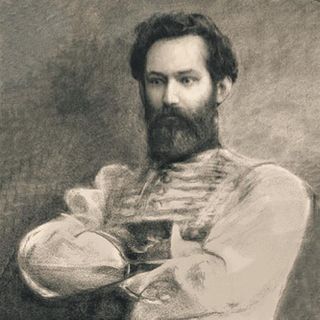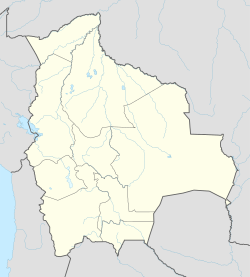
Antonio José de Sucre y Alcalá, known as "Gran Mariscal de Ayacucho", was a Venezuelan independence leader who served as the 4th President of Peru and as the 2nd President of Bolivia. Sucre was one of Simón Bolívar's closest friends, generals and statesmen.

José Fernando de Abascal y Sousa, 1st Marquess of Concordia, KOS, was a Spanish military officer and colonial administrator in America. From August 20, 1806 to July 7, 1816 he was viceroy of Peru, during the Spanish American wars of independence.

The Bolivian war of independence began in 1809 with the establishment of government juntas in Sucre and La Paz, after the Chuquisaca Revolution and La Paz revolution. These Juntas were defeated shortly after, and the cities fell again under Spanish control. The May Revolution of 1810 ousted the viceroy in Buenos Aires, which established its own junta. Buenos Aires sent three military campaigns to the Charcas, headed by Juan José Castelli, Manuel Belgrano and José Rondeau, but the royalists ultimately prevailed over each one. However, the conflict grew into a guerrilla war, the War of the Republiquetas, preventing the royalists from strengthening their presence. After Simón Bolívar and Antonio José de Sucre defeated the royalists in northern South America, Sucre led a campaign that was to defeat the royalists in Charcas for good when the last royalist general, Pedro Antonio Olañeta, suffered death and defeat at the hands of his own defected forces at the battle of Tumusla. Bolivian independence was proclaimed on August 6 of 1825.

The Argentine War of Independence was fought from 1810 to 1818 by Argentine patriotic forces under Manuel Belgrano, Juan José Castelli and José de San Martín against royalist forces loyal to the Spanish crown. On July 9, 1816, an assembly met in San Miguel de Tucumán, declared full independence with provisions for a national constitution.

Andrés de Santa Cruz y Calahumana was a general and politician who served as the 7th President of Peru in 1827, the Interim President of Peru from 1836 to 1838 and the 6th President of Bolivia from 1829 to 1839. He also served as Supreme Protector of the short-lived Peru-Bolivian Confederation from 1836 to 1839, a political entity created mainly by his personal endeavors.

The Battle of Ayacucho was a decisive military encounter during the Peruvian War of Independence. It was the battle that secured the independence of Peru and ensured independence for the rest of South America. In Peru it is considered the end of the Spanish American wars of independence, although the campaign of the victor Antonio José de Sucre, continued through 1825 in Upper Peru and the siege of the fortresses Chiloé and Callao finally ended in 1826.

Mateo García Pumacahua simply known as Pumacahua, modern spelling variants Pumakawa or Pumaqawa was a Royalist commander later turned into a Peruvian revolutionary who led the Cuzco Rebellion of 1814 in the War of Independence.
Acora District is one of fifteen districts of the Puno Province in the Puno Region, Peru.

What today is commonly referred as the Independence of Argentina was declared on July 9, 1816, by the Congress of Tucumán. In reality, the congressmen who were assembled in Tucumán declared the independence of the United Provinces of South America, which is one of the official names of the Argentine Republic. The Federal League Provinces, at war with the United Provinces, were not allowed into the Congress. At the same time, several provinces from the Upper Peru that would later become part of present-day Bolivia, were represented at the Congress.

The Battle of Suipacha was fought on 7 November 1810 in Bolivia during the Bolivian War of Independence between the Spanish colonial army and the Republican forces sent by the Primera Junta from Buenos Aires. At the time Bolivia was known as Upper Peru. It was the first decisive defeat of the Royalists by Republican forces. The battle took place 25 km (16 mi) southeast of Tupiza, near the small town of Suipacha, on the margin of the Suipacha river in the Sud Chichas province.

The Peruvian War of Independence was composed of a series of military conflicts in Peru beginning with viceroy Abascal military reconquest in 1811 in the battle of Guaqui, continuing with the definitive defeat of the Spanish Army in 1824 in the battle of Ayacucho, and culminating in 1826 with the Siege of Callao. The wars of independence took place with the background of the 1780–1781 uprising by indigenous leader Túpac Amaru II and the earlier removal of Upper Peru and the Río de la Plata regions from the Viceroyalty of Peru. Because of this the viceroy often had the support of the "Lima Oligarchy", who saw their elite interests threatened by popular rebellion and were opposed to the new commercial class in Buenos Aires. During the first decade of the 1800s Peru had been a stronghold for royalists, who fought those in favor of independence in Peru, Bolivia, Quito and Chile. Among the most important events during the war was the proclamation of independence of Peru by José de San Martín on 28 July 1821.

Martín Miguel de Güemes was a military leader and popular caudillo who defended northwestern Argentina from the Spanish during the Argentine War of Independence.

The royalists were the Latin American and European supporters of the various governing bodies of the Spanish Monarchy, during the Spanish American wars of independence, which lasted from 1808 until the king's death in 1833. In the early years of the conflict, when King Ferdinand VII was captive in France, royalists supported the authority in the Americas of the Supreme Central Junta of Spain and the Indies and the Cortes of Cádiz that ruled in the King's name during the Peninsular War. After the restoration of Ferdinand VII in 1814, royalists supported his claim to rule Spanish America, but were split between those that supported his insistence to rule under traditional law and liberals, who sought to reinstate the reforms enacted by the Cortes of Cádiz.

The Battle of Cotagaita was fought on October 27, 1810 during the Campaign of Upper Peru in the Argentine War of Independence when the troops of the Army of the North were sent by the Primera Junta government in Buenos Aires to the Alto Perú to fight the Royalists. It was the first skirmish of the Army of the North in this theatre. The battle was fought near the town of Santiago de Cotagaita, nowadays in Potosí Department in Bolivia.
The Spanish American wars of independence were the numerous wars against Spanish rule in Spanish America during the early 19th century. With the aim of political independence, these began shortly after the French invasion of Spain in 1807 during Europe's Napoleonic Wars. Although there has been research on the idea of a separate Spanish American ("creole") identity separate from that of Iberia, political independence was not initially the aim of most Spanish Americans, nor was it necessarily inevitable. With the restoration of Ferdinand VII in 1814, the King rejected any type of popular sovereignty, as seen in the Spanish Constitution of 1812 passed by the Cortes of Cádiz – the parliamentary Regency in place while Ferdinand VII was deposed. The Liberal Triennium of 1820 also did not change the position of the Cádiz constitution against separatism, while Latin Americans were increasingly radicalized seeking political independence.
Pedro Antonio Olañeta was a Royalist commander in the army of the Spanish Empire who fought the against the South American insurgency led by Simón Bolívar. His support for Spanish absolutism and rebellion against the moderate Royalists created conflicts within the Royalist army that aided the rebels. After the defeat of the main Royalist armies, he continued the resistance, becoming one of the last Royalist commanders to hold out.

The invasion of the Iberian Peninsula in 1807-08 by Napoleon Bonaparte's forces proved to be critical for the independence struggle in South America, during which the local elites of Upper Peru remained mostly loyal to Spain, supporting Junta Central, a government which ruled in the name of the overthrown king Ferdinand VII of Spain. A number of radical criollos in 1808-10 began a local power struggle. Pedro Domingo Murillo proclaimed an independent state in Upper Peru in the name of king Ferdinand VII. During the following seven years Upper Peru became the battleground between the armed forces of independent United Provinces of the Rio de la Plata and royalist troops from Viceroyalty of Peru.

The city of La Paz experienced a revolution in 1809 that deposed Spanish authorities and declared independence. It is considered one of the early steps of the Spanish American wars of independence, and an antecedent of the independence of Bolivia. However, such revolution was defeated shortly afterwards, and the city returned to Spanish rule.

The Protectorate of Peru was a protectorate created in 1821 in modern Peru after its declaration of independence. It existed for a year and 17 days, under the rule of José de San Martín and Argentina.

Juan Antonio Álvarez de Arenales was an Argentine general of Spanish origin that fought in the war for the United Provinces of the Río de la Plata, Chile and Peru.

















